| Latin name | observation date | Location |
|---|---|---|
| Asiatic dayflower | 01.11.2024 | Meherpur, Khulna, Bangladesh |

The Asiatic dayflower (Commelina communis) is a herbaceous plant belonging to the family Commelinaceae. Known for its delicate, bright blue flowers, this plant is native to East Asia but has been introduced to many other parts of the world, often growing as a weed in gardens, fields, and disturbed areas. Each flower typically has two large, vibrant blue petals at the top and one smaller white petal below, giving it a striking appearance. The flowers last only a single day, hence the name "dayflower." Its leaves are lance-shaped, smooth, and alternate along the stem. It is a low-growing or sprawling plant, often forming dense mats. It propagates through seeds and stolons (above-ground runners). In East Asian traditional medicine, parts of the plant have been used to treat fevers and inflammation. Historically, the blue pigment from its flowers was used as a natural dye in Japan, especially in creating prints. Although the Asiatic dayflower is admired for its beauty, it is considered invasive in some regions due to its ability to spread quickly and outcompete native vegetation.
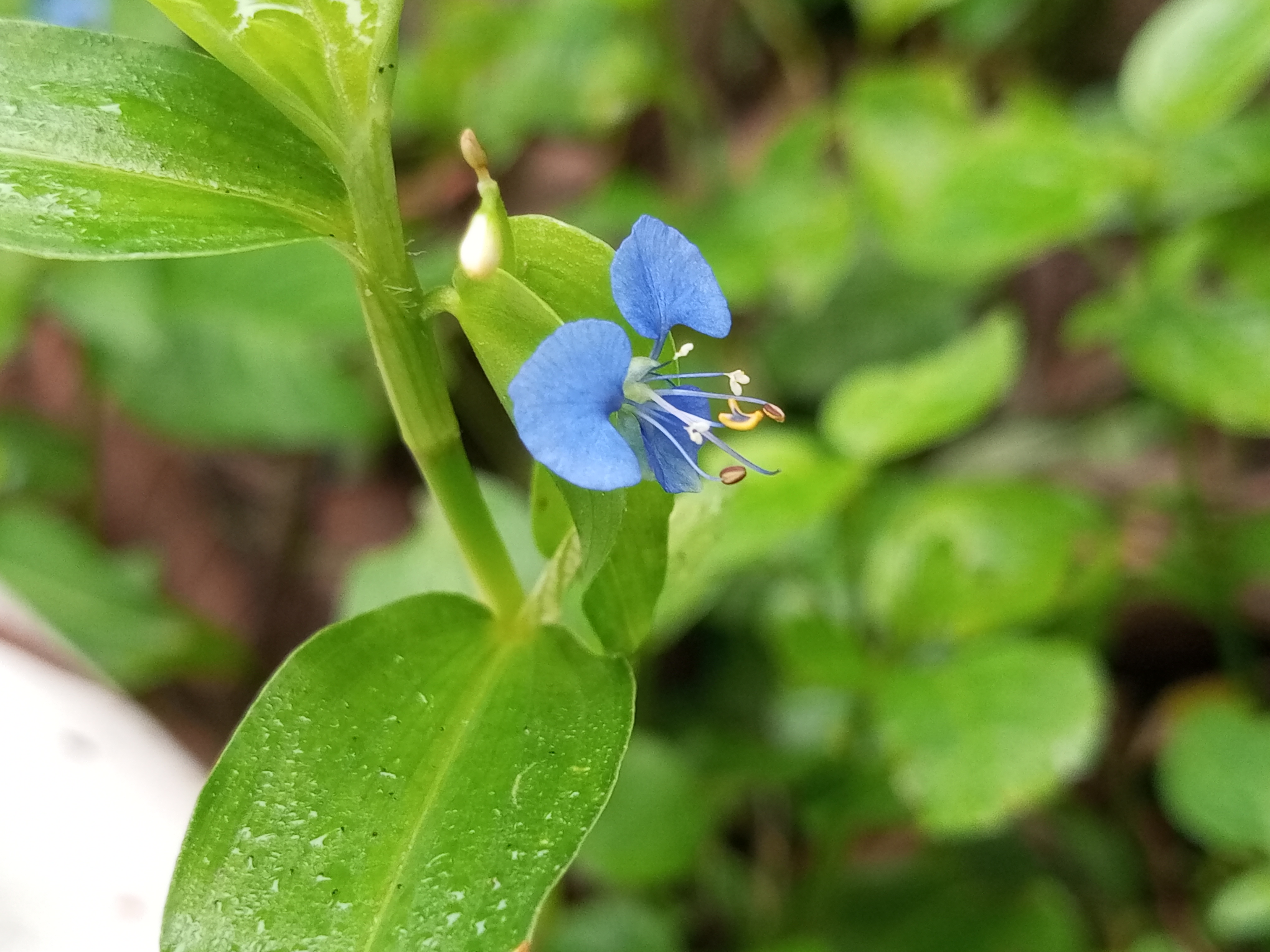

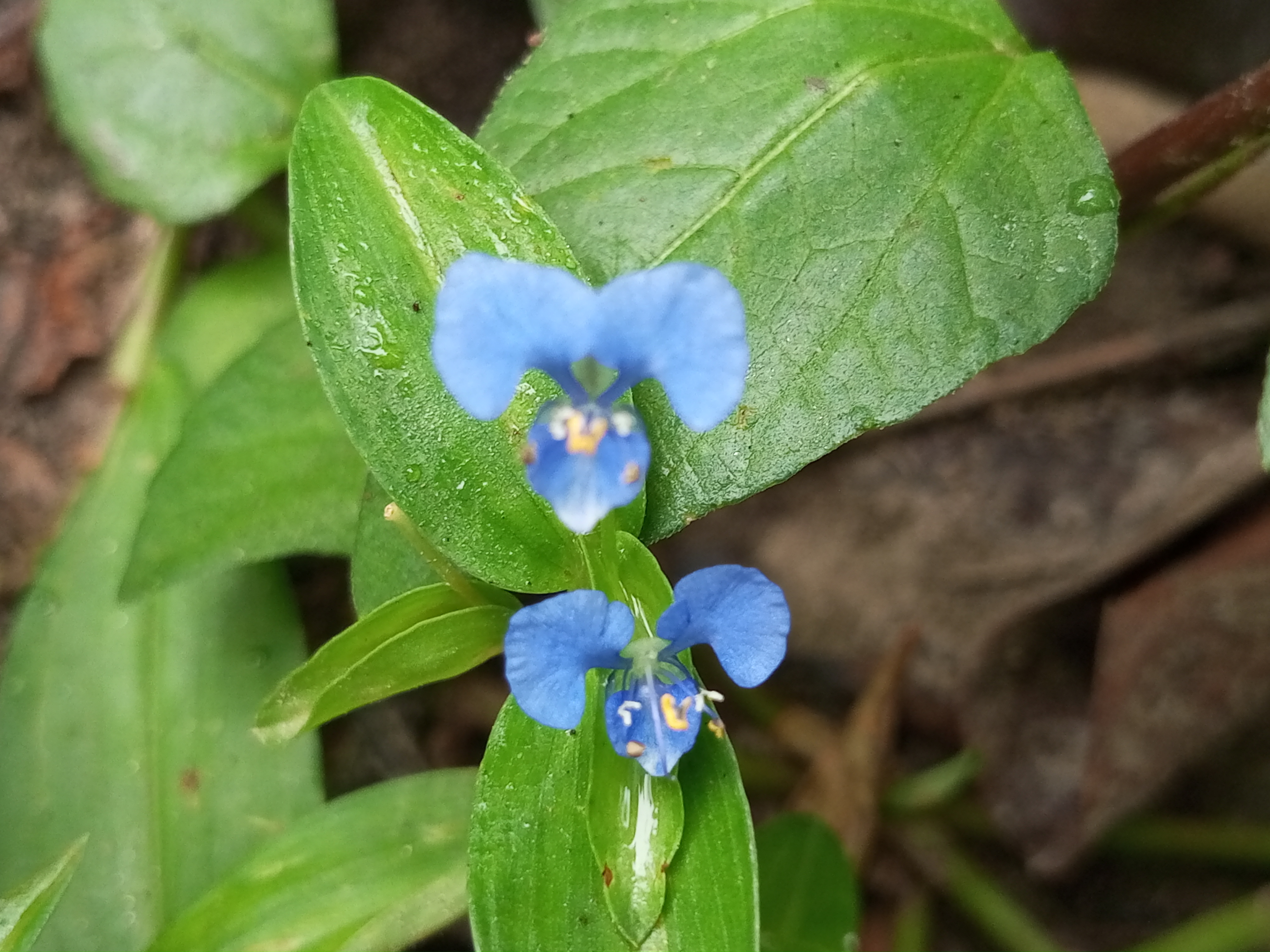
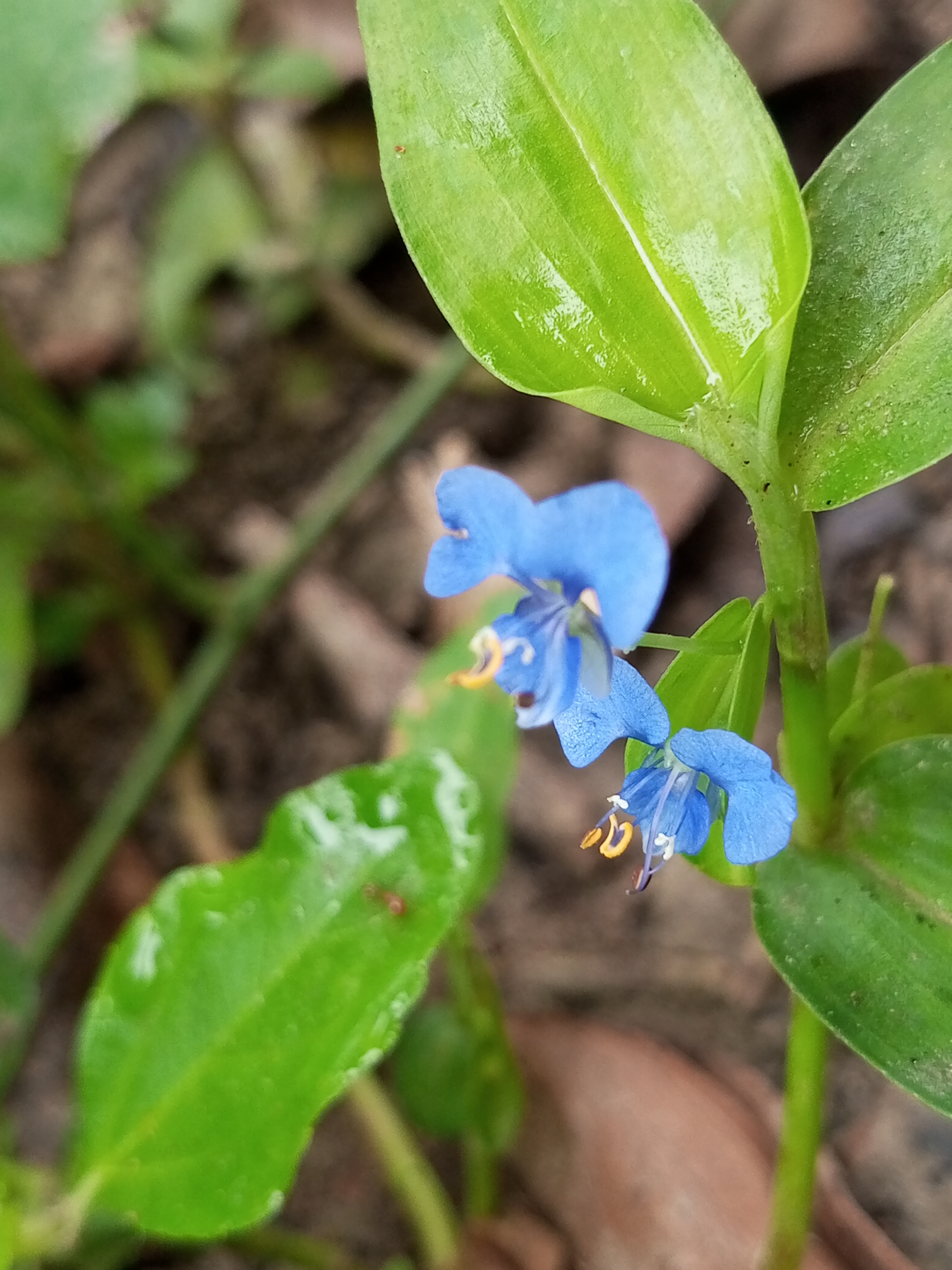
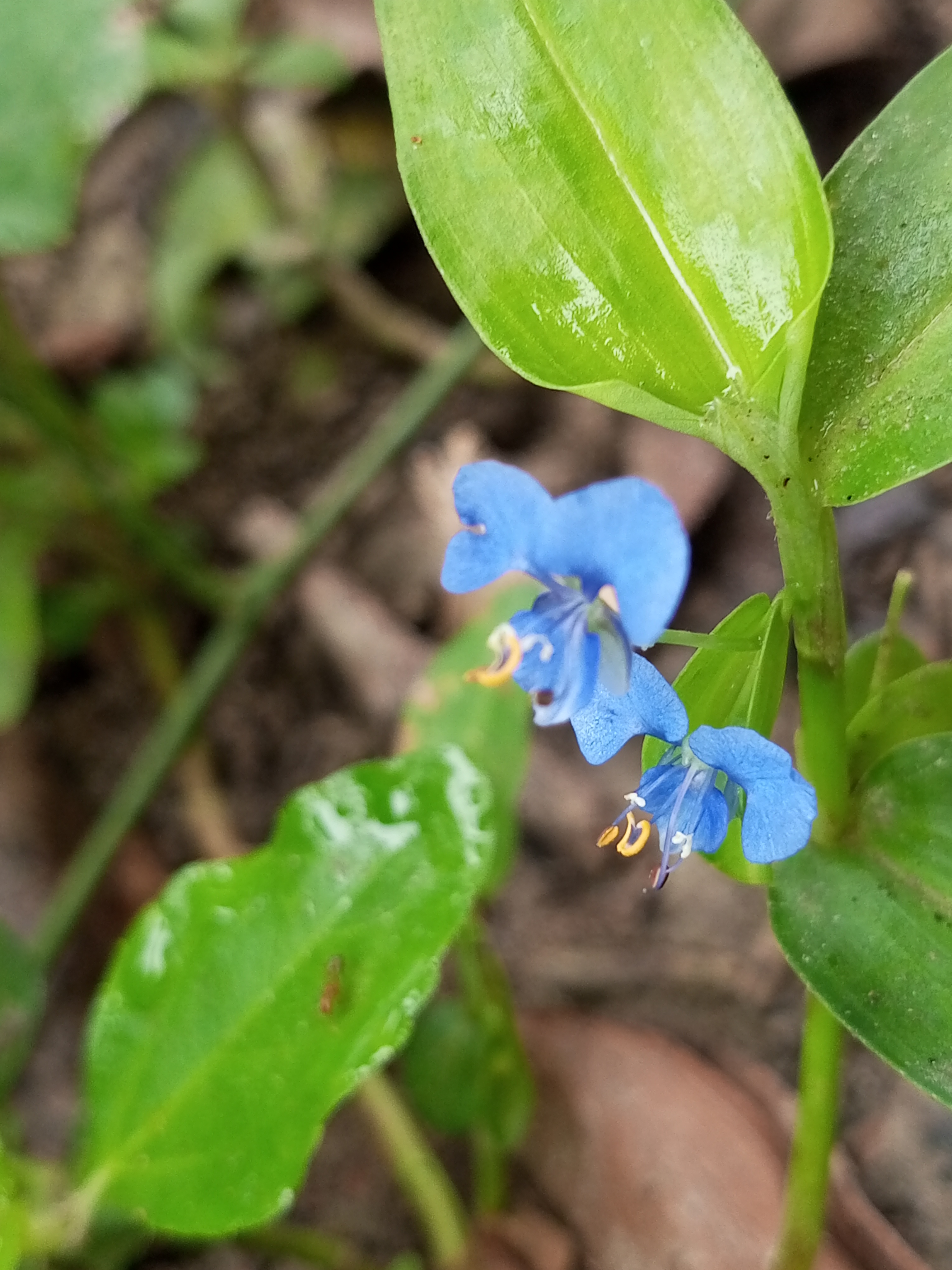
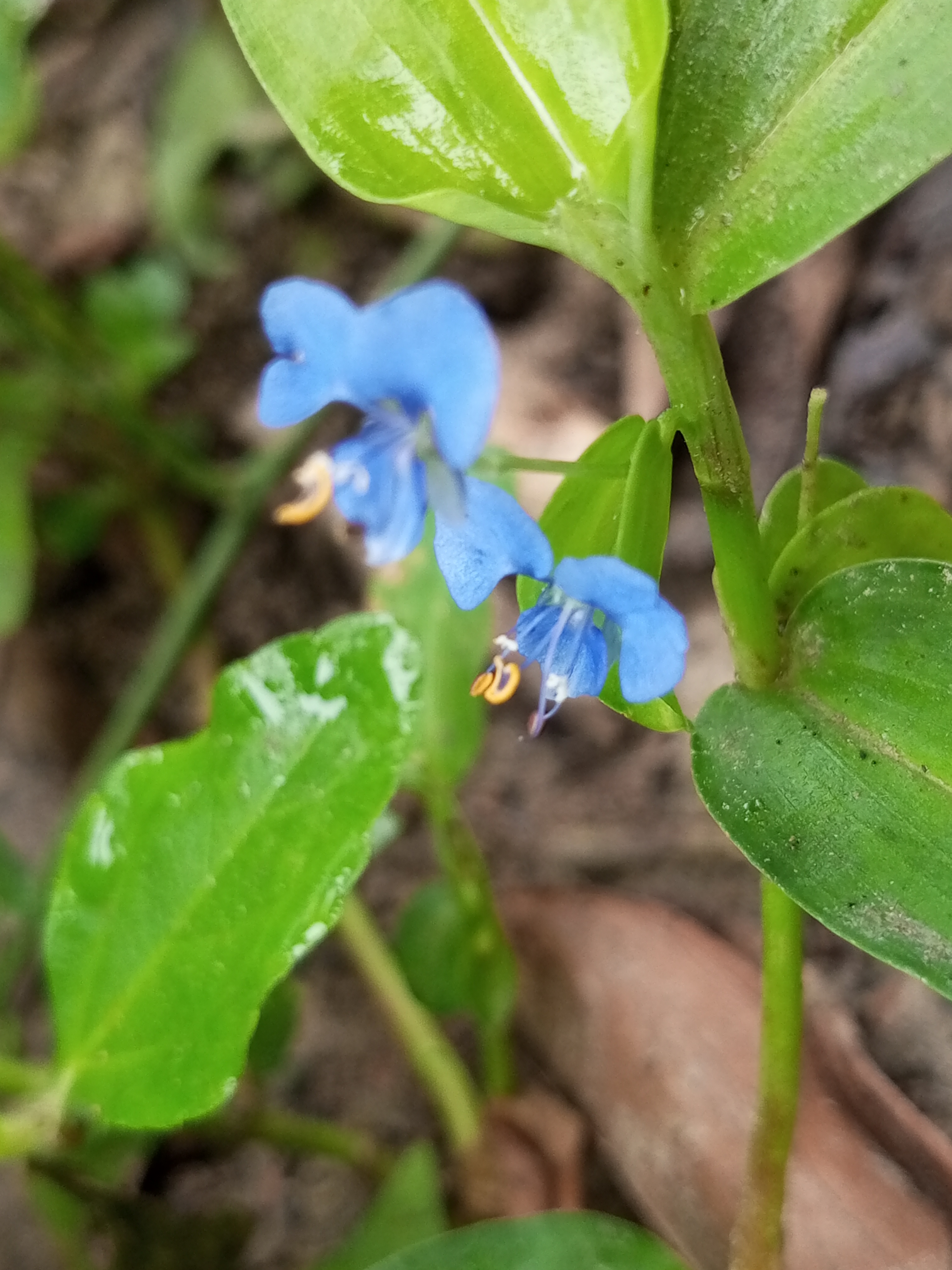
| Camera used | Smartphone |
|---|---|
| Lens | Macro |
| F-stop | - |
| Iso speed | ISO |
| Focal length | MM |
| Photograph | Asiatic dayflower |
| Location | Meherpur,Bangladesh |
| Photographer | @mousomi009 |
| Link to original | community |
|---|---|
| Link | https://www.inaturalist.org/observations/251145977 |
| Latitude | Longitude | Map |
|---|---|---|
| 23.77826 | 88.63139 | https://www.openstreetmap.org/?mlat=23.84440&mlon=88.80644#map=16/23.84440/88.80644&layers=N |